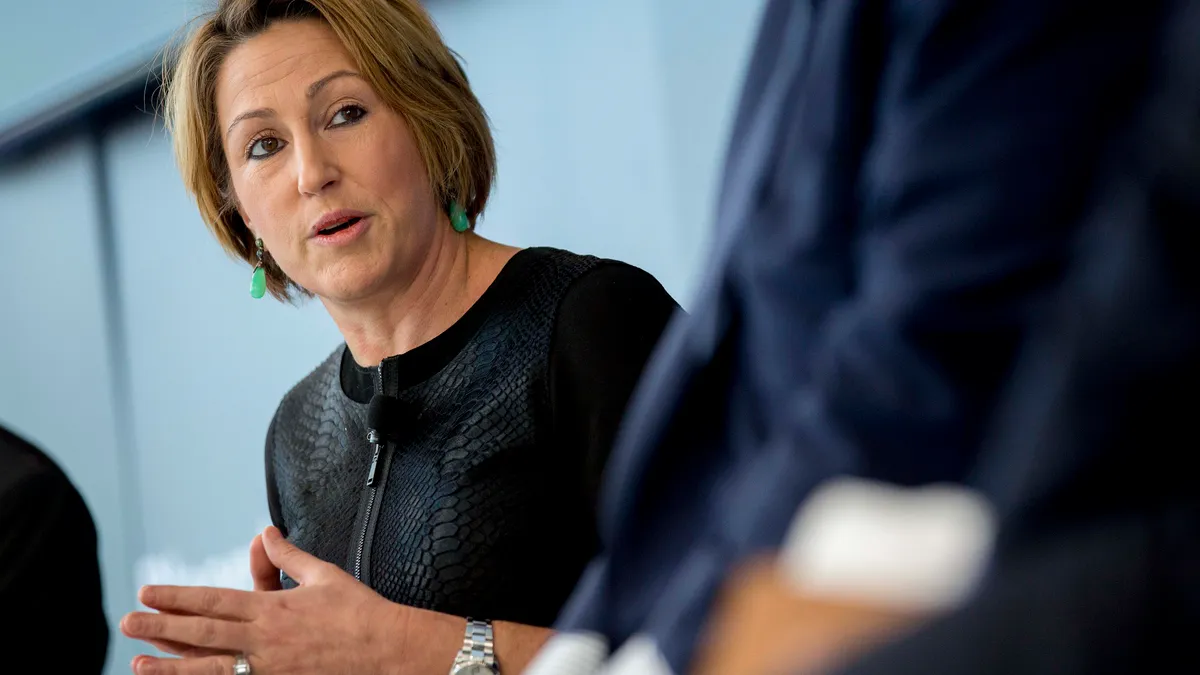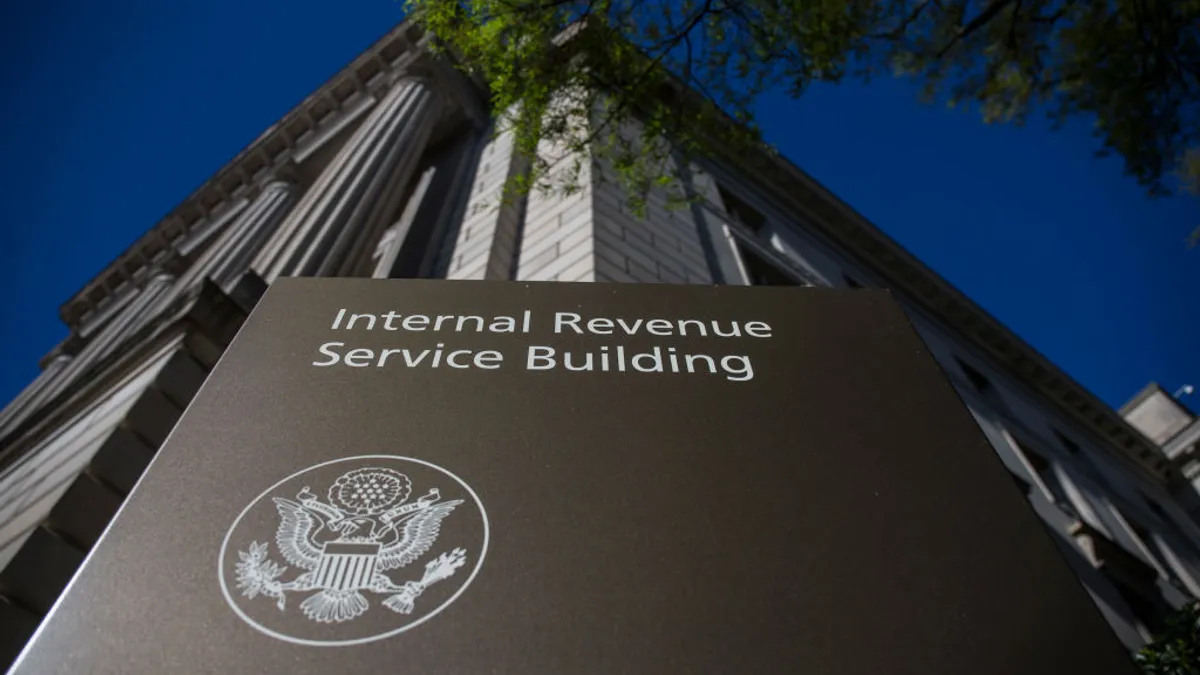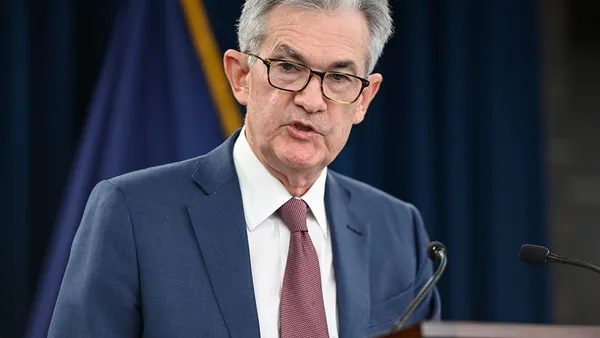Meghan Birmingham Leader is executive vice president, head of transaction banking, corporate and commercial banking, at Bank of the West. Views are the author's own.
Normally, the corporate treasurer operates quietly in the background of their company: they monitor financial risk and manage liquidity by investing spare cash while ensuring there is enough money on hand to pay vendors, employees and others. Then came COVID-19.
The past 18 months have upended treasury operations faster and more completely than anyone could have predicted. Global supply chain snafus, the unpredictability of stop-and-start economic activity, near-zero interest rates, and the risks of global warming have become a crucible for treasurers.
In this world where cash flow sometimes feels about as predictable as the weather, I’ve found that CEOs and CFOs are increasingly looking to their treasurers as strategic leaders. This means today’s treasurer needs to have more in their toolbox than the traditional core competencies. They need a new blend of soft skills, digital acumen and innovative leadership to succeed in the spotlight. Here’s why.
Supply chain chaos
What could go wrong when you have planes, trains, trucks and container ships intricately linked up to ports, manufacturing facilities, warehouses and retail locations? COVID-19 wrenched apart the intensely optimized global supply chains of many large companies.
Consider that 94% of Fortune 1000 companies report supply chain disruptions from the pandemic. Seventy-five percent say the impact on their business has been negative or strongly negative, and more than half say they already have or will downgrade growth forecasts.
That’s the bad news. The worse news is that supply chain snarls aren’t going away soon. A record-breaking 56 cargo ships were recently reported to be in a traffic jam off the California coast. Shipping, port and manufacturing delays will continue into 2022, says the IHS Markit research group.
When you don’t know if your widgets (or the parts to make your widgets) will get to you in a timely manner, you can’t forecast revenue or cash flow. The list of supplies and products facing a shortage is a veritable kitchen sink. From hot dogs to houses and toilet paper to used cars. Of course, the poster child has been semi-conductor chips. Some anxious companies have been “double booking” orders in an effort to secure inventory, amplifying the problem. Think about the shortages in your industry and imagine what that does to cash flow projections.
The treasurer’s job of carefully balancing the company’s working capital — what they’re owed versus what they have to pay someone else — has become a tightrope act.
A stop-and-start economy
An extra 200,000 businesses above historical levels shut down in the first year of the pandemic.
But consumer demand was unleashed this summer as re-openings spread across the country. The tightening and easing, of business restrictions has created demand surges that supply can’t predict. And this isn’t just a problem for materials and finished goods.
Imagine your customer is a restaurant owner. Labor shortages mean even if they wanted to fully reopen they may only have the staff to offer dinner service three days a week. If your customer’s business — whether restaurant, retailer, hospital or manufacturer — is booming one month and closing the next, forecasting demand and sales is nearly impossible. Cash flow is harder to gauge and anticipate.
Search for yield
Lower rates around the world enabled treasurers to refinance and take on new low-cost debt. But now treasurers as institutional investors are facing the same dilemma as retail investors: where can they find safe returns? Traditional income-producing investments are no longer so attractive. At the same time, the threat of inflation looms. So holding cash is not ideal. The current low-interest rate environment means more treasurers are exploring higher risk alternatives like crypto currencies.
Climate risk
Climate-fueled natural disasters are getting bigger and more unpredictable. Businesses face the risk of droughts, fires, hurricanes and the damage they do across the country and globally.
But there’s also new federal climate regulation on the horizon. The SEC is expected to propose climate risk disclosure rules by year-end. Many treasurers are finding themselves at the bottom of a very steep learning curve for this nascent area of risk management. With climate reporting standards still not locked down, finance teams must try to get a grip on their own emissions and ESG performance data.
As companies move to mitigate the risk tied to their own carbon footprints and climate vulnerabilities, they will also be shifting business strategies. More investors are asking: Is this company an asset or a liability on the world’s climate balance sheet?
Treasurers are well-positioned to become sustainability champions. They have the opportunity to lead their company’s impact investing and be on the forefront of allocating capital to greener business strategies in general. One way is by looking more closely at the ESG metrics of their suppliers, ensuring compliance with certain standards and embedding ESG requirements in the RFPs they issue.
The new treasurer
From what I’ve seen and heard, treasurers are adapting to business volatility and their evolving role in five ways.
- Strong partnering skills. Many finance teams are no longer all together in the office. They’re more likely to be working from home offices and kitchen tables. But while they are physically distant, they need to work more closely with their teams and partners. Treasury professionals have named collaboration and business partnering as a top priority for corporate treasurers in 2021.
- Digital acumen. CFOs expect treasurers to be digitally fluent. Real-time technology adoption offers a prime example. A few years ago, same-day payment settlement was considered fast, now the expectation has shrunk to just minutes or near real-time. Think of the numbers: $70 billion of real-time payment transactions were processed globally in 2020, up 41% from 2019. The digitization and automation of payments made possible with APIs also brings tracking data. That enables improved cash flow visibility, data management and business intelligence. The automation of treasury, enabled by artificial intelligence has become a priority. When liquidity is automated and treasurers don’t have to watch the balance of multiple accounts, their time can be spent on more strategic priorities.
- Sharp communication skills. Building persuasive narratives, listening and being able to get points across clearly and quickly are a must. Treasurers are stepping from the background to be strategic advisers to the C-suite and the board. Building on analysis to deliver simple and clear direction further enables treasury departments to quickly pivot.
- Current on future currencies. High-profile publicly traded companies using cryptocurrency, such as Tesla, Square and Microstrategy, have ignited interest in digital assets. An estimated 58% of multinational companies are now using cryptocurrencies — especially when moving funds across borders. Crypto also has potential to secure real-time transfers and be a balancing asset for investment in a low-yield future. The potential impact on investment management, operations and transactions, means treasurers should keep a close eye on developments in the space.
- Innovation-focused leadership. This is an extraordinary time for treasurers facing seismic changes disrupting their core job of moving cash back and forth. CFOs are looking beyond technical accounting skills and the ability to understand and mitigate new types of risk in volatile times. They are looking to treasurers for leadership, to add value by advising on opportunity. Treasurers need to be able to put it all together — leverage partnerships, stay on top of new risks, apply technology advances and invest in sustainable business shifts to truly help the C-suite build better, more resilient companies.
COVID-19 has drawn back the curtain on the complex world of the corporate treasurer and shown they are ready to take center stage. The qualities treasurers relied on pre-pandemic are no longer enough under the glare of the spotlight. Today’s treasurers must embrace new and different skillsets and mindsets if they expect to help their organizations shine.





















